I've been waiting for a decade to see a male Valley carpenter bee (Xylocopa varipuncta) foraging in our family bee garden.
The girls? Oh, yes. We see them every day. Sometimes half a dozen at a time. They're usually on the salvia or passionflower vine.
The boys? No. They do not go where our girls are. I saw a solo fly-by a couple of years ago, but he did not stop.
Then last Saturday, a male Valley carpenter bee dropped down and nectared on the foxgloves (Digitalis purpurea), the dwarf bulbine (Bulbine frutescens), the catmint (Nepeta) and the blanket flower (Gaillardia x grandiflora).
In that order.
To be honest, a very territorial European male carder bee (Anthidium manicatum) chased him off the foxgloves, so our big boy headed for the catmint and then the blanket flower, where he encountered only docile honey bees.
The male Xylocopa varipuncta is the insect that results in so many similar calls--"I found a golden bumble bee! Is it a new species?" A bumble bee it is not. A carpenter bee it is.
Native pollinator specialist Robbin Thorp, distinguished emeritus professor of entomology at the University of California, Davis, calls the male Valley carpenter bees "teddy bears." That's because they're green-eyed, blond and fuzzy-wuzzy. Thorp reminds curious kids and apprehensive adults that "boy bees can't sting."
Thorp often displays a female Valley carpenter bee (solid black) alongside the blond male to show the sexual dimorphism, or what Wikipedia explains is a phenotypic differentiation between males and females of the same species.
The Boy Wonder is sort of like a blond Marilyn Monroe male courting a Clarkette Gable.
What happened when the Boy Wonder left the blanket flower? He returned to the foxgloves.
Just briefly. Until the wool carder bee targeted him again.
Attached Images:
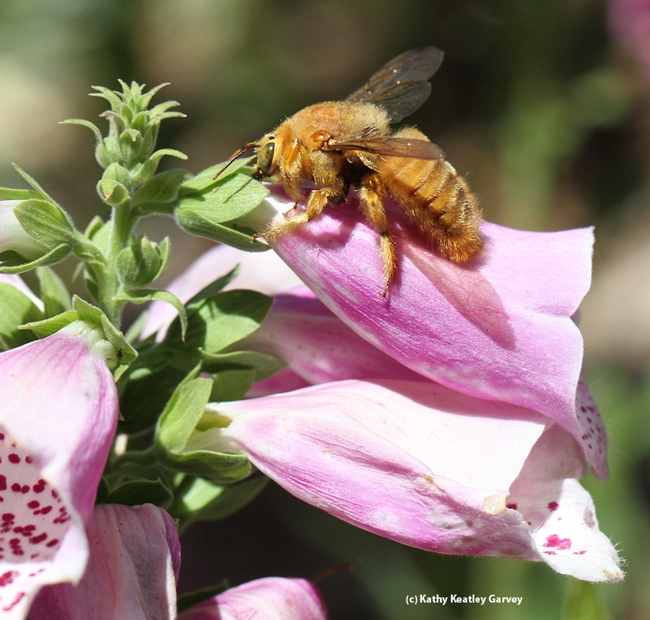
A male Valley carpenter bee engaging in nectar robber; he's drilling a hole in a foxglove to get the nectar, avoiding the pollination process. (Photo by Kathy Keatley Garvey)
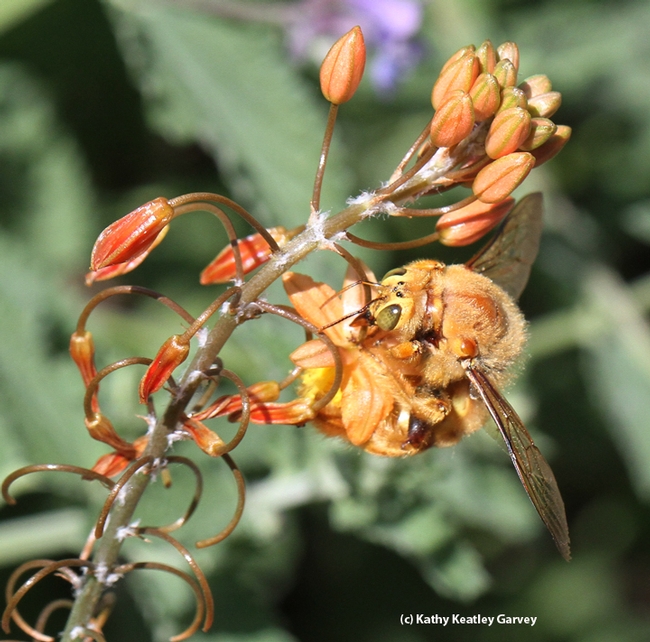
Male valley carpenter bee foraging on dwarf bulbine. (Photo by Kathy Keatley Garvey)
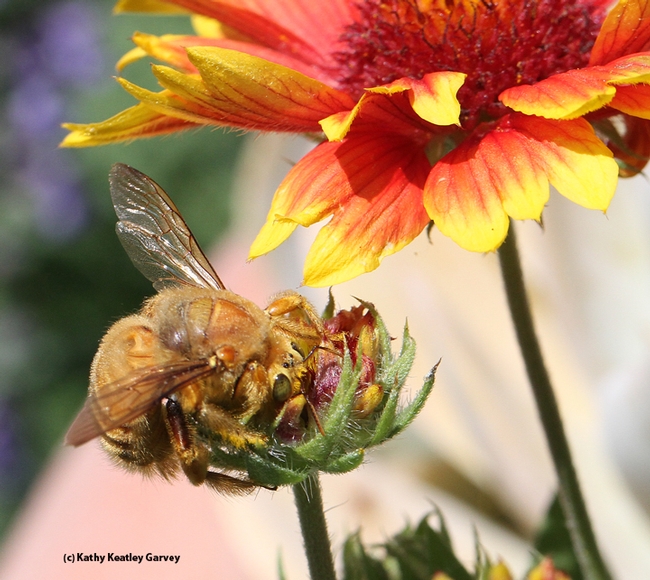
Male Valley carpenter bee "cuddling" a blanket flower. (Photo by Kathy Keatley Garvey)
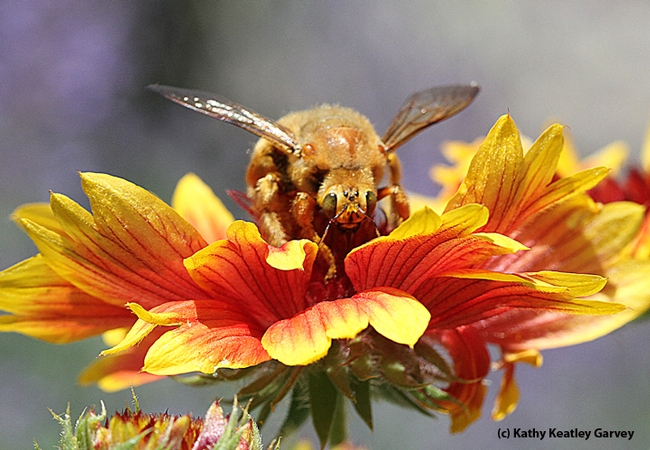
Eyeing the photographer, a male Valley carpenter bee gets ready to leave a blanket flower. (Photo by Kathy Keatley Garvey)
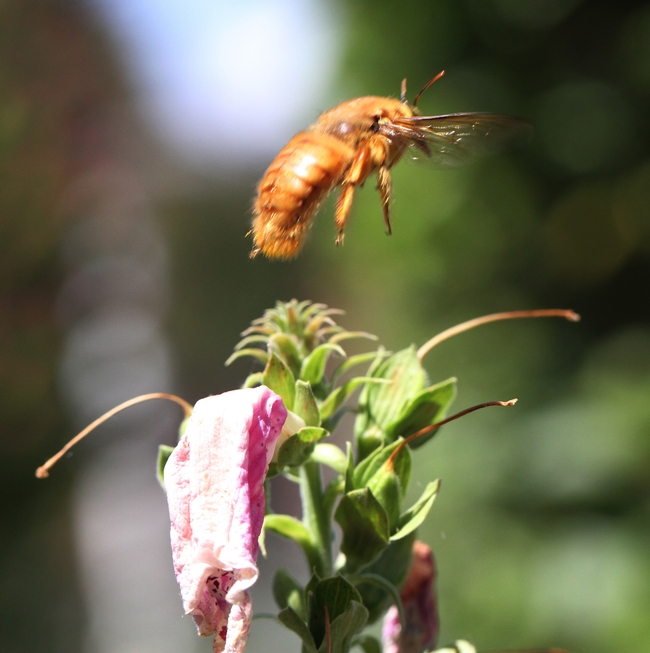
A male Valley carpenter bee lifts off a foxglove. He was early chased by a territorial male European wool carder bee. (Photo by Kathy Keatley Garvey)